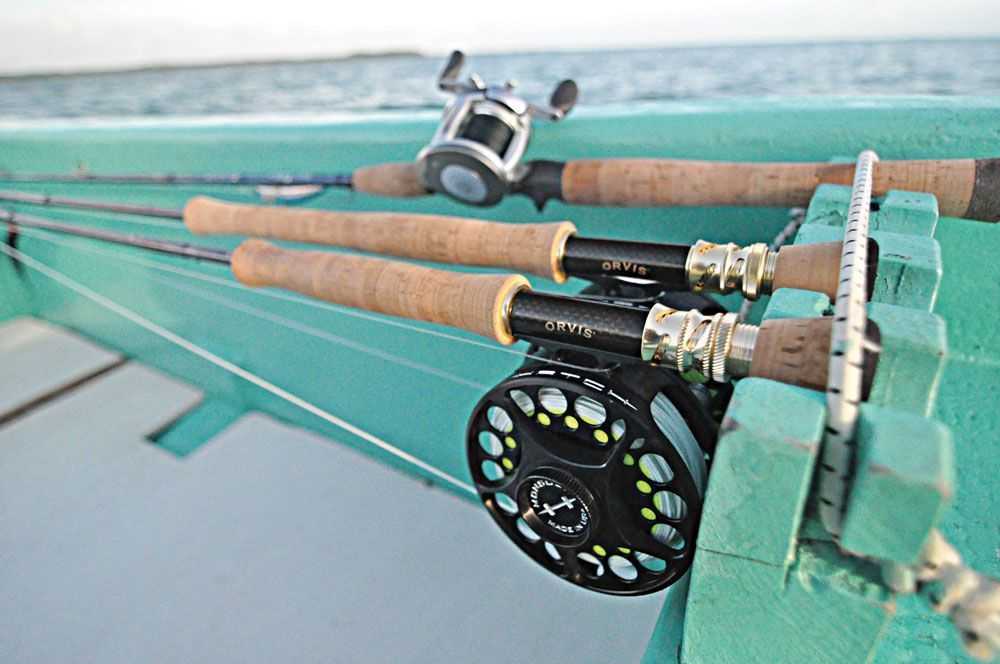Getting started in saltwater fly fishing can seem like an overwhelming task, but it is really uncomplicated. It’s most important to purchase the right rod and reel for the type of fishing you’ll be doing. The east coast striper fly fisher will require a different outfit than will a guy in the west coast surf perch fishery, and the guy interested in catching redfish in the Louisiana marsh will have a different rig than the angler casting to bonito off a jetty in southern California. Here are my suggestions:
The Rod
Choose a 7- or 8-weight rod. This rod is the perfect starter rod for the beginning saltwater fly fisher, heavy enough to punch a saltwater fly into a stiff wind, yet light enough to cast all day. Technically, you can use a heavier trout rod, but ideally, you want to use a saltwater rod because not only is it made out of materials that can handle the rugged saltwater and sand but the actual construction of the rod is built for heartier conditions as well.
The Reel
A good direct-drive reel that can hold a minimum of 200 yards of 30-pound Dacron backing will work very well in most saltwater fly fishing situations. Currently, fly reels designed for saltwater fishing are more than adequate in handling fish up to 50 pounds. To save you the price of an extra reel, buy an extra spool for your reel to hold your shooting head (explained below).
Fly Lines
This is where it can get complicated, but fear not, it really is not that involved. Here is what you’ll need:
- A basic weight forward (WF) floating line matched to the weight of your fly rod. The WF floating line is a great all-around fly line for sight casting in shallow water. Don’t get confused by all the marketing of “Saltwater Taper,” “Bonefish Taper” and “Redfish Taper.” All these lines are suitable for the expert, but not for the beginner.
- A weighted shooting head. These lines have combined the weighted front taper and the intermediate running line and are great for sub-surface fishing or fishing rip currents from the beach. When fish are feeding below the surface, the shooting head will keep your fly in the hitting zone longer. I would choose a 250 to 300 grain. The grain weight relates to the sink rate of the fly line, so a 250- to 300-grain line will sink between 5 and 8 inches per second. This is plenty of sink rate to get you down to subsurface feeding fish.
A basic, solid rod, reel, and line combo will ensure you get the most enjoyment out of saltwater fly fishing and prepare you for the next step.
